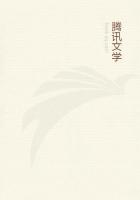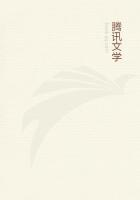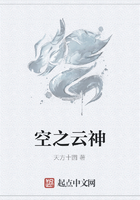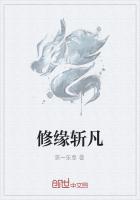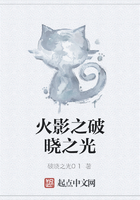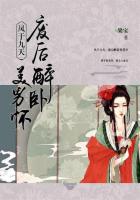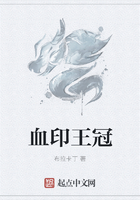The object of adding a dye in moderation, he asserts, is to give temporary color to the ink and where indigo-paste is used, it has been assumed that it kept the iron gallo-tannate in solution, whereas any virtue of this kind which indigo-paste possesses is more likely due to the sulphuric acid which it contains than to the indigo itself. The essential part of the paste required is the sulpho-indigodate of sodium, now commonly called indigo-carmine. He further remarks that the stability of an ink precipitate depends upon the amount of iron which it contains and which on no account should be less than eight per cent; he adds rightly, if gallic acid be preferably used in substitution for tannin, "no precipitate is obtained under precisely similar conditions." This point followed up explains in a measure why a gall infusion prepared with hot water is not suitable for a blue-black, while a cold water infusion is. In the latter case a comparatively small percentage of tannin is extracted from the galls, while much is extracted with hot water and the consequence is, on adding the indigo blue the color is not brought out as it should be. Substantially the same thing occurs with ink made with the respective acids, although the blue color remains for a time unimpaired in the tannin ink, apparently due to the fact that ferrous-tannate reduces indigo blue to indigo white, a change which the low reducing power of ferrous-gallate does little to effect. The vegetable matter in common inks facilitates the destruction, or rather alteration and precipitation of the indigo, for the dye appears in the iron precipitate and may be extracted from it with boiling water.
Dr. Clark's investigations seek to demonstrate the superiority of tannin and gallic acid over infusions of the natural galls, and he undertakes to determine the correct ratio of tannin and sulphate of iron to be used as ink. His experiments in this line show that:
1. The amount of precipitate increases as the proportion of iron to tannin is increased.
2. The composition of the precipitate is so valuable as to preclude the possibility of its being a definite body. Increase of iron in the solution has not at first any effect on the composition of the precipitate, but afterwards iron is found in it in greater but not proportional amount.
3. At one point the proportions of iron in the precipitate and in solution are the same, and this is at between 6 and 10 parts of iron to 100 parts of tannin.
4. The proportion of iron in the precipitate varies greatly with the length of time the ink has been exposed.
At first the precipitate contains 10 per cent of iron, but by and by a new one having only 7.5per cent is formed, and in from forty to seventy days we find one of 5.7 per cent. Simultaneously iron increases in the ink (proportionate to the tannin).
5. The results show, and practice confirms, that 16 parts of iron (80 ferrous sulphate) and 100 parts of tannin are best for ink manufacture.
The research now travelled in a direction which accumulating experience showed to be obligatory.
Blue-black tannin ink lost color, and the reducing nature of the tannin tended to the formation of a highly objectionable precipitate in the ink, which made writing anything but a pleasure. These two faults were doubtless linked together in some way and seemed not to exist when gallic acid was used, for ink so made was found to precipitate only after a long exposure, it required no free acid to keep the precipitate in solution, and retained the indigo blue color for a long time; alkalis did not decompose the ink, and provided blacker and more permanent writing.
Determination of the correct proportions of gallic acid and ferrous-sulphate was the subject of prolonged experiments conducted on similar lines to those already detailed. The conclusions as to precipitation were also similar. Thirty parts of iron (150 of ferrous-sulphate) and 100 parts of gallic acid were found to be the most suitable proportions for ink-making. It is advisable, however, not to discard tannin altogether, owing to the slow blackening of the gallic acid ink, and a little tannin gives initial blackening and body, while it is absolutely necessary for copying ink.
Initial blackness can also be ensured by oxidizing 21 per cent of the ferrous-sulphate without adding the extra acid necessary to the formation of a ferric salt.
The concluding portion of his research is devoted to the influence of sugar upon the permanence of ink, and the results of the experiments are summed up in the following sentences: "It would be injurious to add 3 per cent of sugar to a tan in ink, while from 4 to 10 per cent would be quite allowable. Most copying inks contain about 3.5 per cent of sugar--not far from the critical amount. With gallic acid more than 3 per cent of sugar hardly varies the precipitate, but the importance of this point is somewhat diminished by the fact that the presence of sugar is by no means necessary in a writing ink. Dextrin is a much superior substance to use. Curiously this body rapidly precipitates a tannin ink; hence it is useless for copying ink, but for the gallic ink it is an excellent thickener."Chen-Ki-Souen, "Lencre de China," by Maurice Jametel, appeared in Paris in 1882, but as the title indicates, it is the old "Indian" or Chinese ink that is discussed.
Schluttig and Neumann in 1890 issued their Edition Dresden on the subject of "Iron and Gall inks." In this valuable work is to be found the formula which has been generally adopted as the standard where one is used for tanno-gallate of iron ink.
The investigations of other scientific men like Lepowitz, Booth, Desormeaux, Chevreuse, Irvine, Traille, Bottger, Riffault, Precht, Nicholes, Runge, Gobert, Penny, Arnold, Thomson (Lord Kelvin), Davids, Kindt, Ure, Wislar and many more who have dealt with the chemistry of inks, present to us some testimony during a considerable portion of the nineteenth century of the efforts made to secure a good ink.

